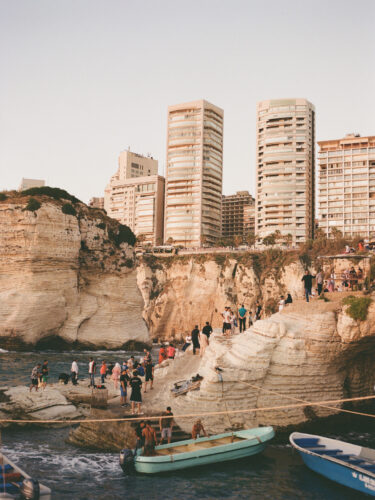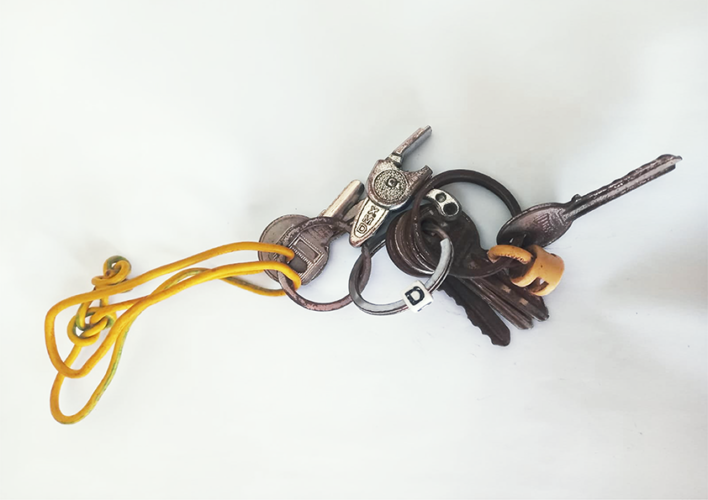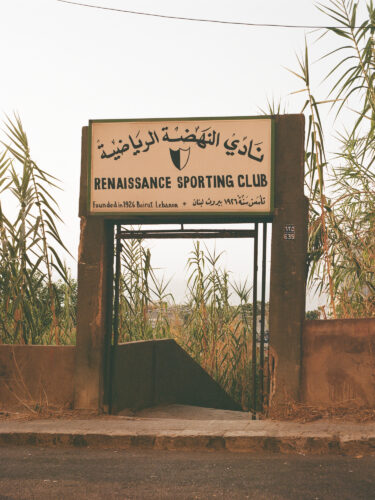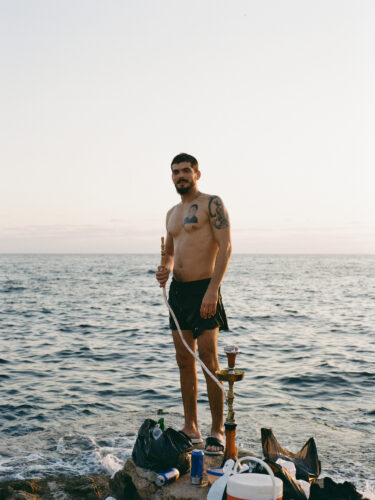EXPOSICIONES
What lies in between
Tanya Traboulsi, Tamara Kalo, Taysir Batniji
6 jun. — 5 oct. 2025
Casa Árabe
— Madrid
Inauguración
5/6/2025 a las 20h
Comisariado por
Ana Belén G. Mula
Organiza
Casa Árabe y PHotoESPAÑA
Horarios de la sede
Lunes a domingo
10:00–20:00
Sede
Casa Árabe
Alcalá, 62
Entrada
Mapa
En una región marcada por conflictos históricos e inestabilidad, tres artistas —con trayectorias y enfoques distintos, pero unidos por un pasado común— nos guían a través de una mirada poética, directa y sin adornos, hacia la realidad de una pequeña zona del mundo árabe en su proceso de resiliencia, desplazamiento forzoso y transformación, arrojando luz sobre las cicatrices de la historia y los retos del presente.
Esta exposición, ganadora de la convocatoria NUR 2025 organizada por Casa Árabe y PHotoESPAÑA, pretende así mostrar la realidad más allá de los titulares, sin ofrecer respuestas definitivas, sino aproximaciones más cercanas que trabajan con la memoria la identidad, los desplazamientos y la transformación.
Traisyr Batniji, utilizando un objeto cotidiano tan simple como un juego de llaves, evoca las experiencias de las personas desplazadas. Estas llaves, testigos silenciosos de hogares perdidos y vidas interrumpidas, sumergen al espectador en las historias intimas de sus protagonistas, abordadas por el artista con profundo respeto y sensibilidad.
En Beirut, uno de los edificios más altos de la ciudad, antes centro de detención, se ha convertido hoy en el hogar de cientos de aves. Su demolición es demasiado costosa, lo que ha dejado un amargo recuerdo en la ciudad, a pesar de haber sido tomado por la naturaleza. Tamara Kalo, con notable conciencia de la memoria de la tierra, presenta un homenaje al olivo, símbolo ancestral de continuidad y convivencia a través de generaciones.
Por su parte, Tanya Traboulsi nos sumerge en una profunda visión humanista de Beirut antes del último estallido del conflicto, a través de sus recuerdos y de un encuentro íntimo con la vibrante ciudad tras años viviendo en Europa. Traboulsi nos invita, con una mirada transparente, y sensible, a descubrir un Beirut tranquilo y sereno, y a conocer la resiliencia de sus habitantes. Todo ello atravesado por trazas de nostalgia.
In a region marked by historical conflicts and instability, three artists — with different trajectories and approaches, but united by a common past — guide us through a poetic, direct, and unembellished lens into the reality of a small area of the Arab world in its process of resilience, forced displacement, and transformation, shedding light on the scars of history and the challenges of the present.
This exhibition, winner of the NUR 2025 call organized by Casa Árabe and PHotoESPAÑA, thus aims to reveal reality beyond the headlines, without offering definitive answers, but rather closer approaches that work with memory, identity, displacement, and transformation.
Traisyr Batniji, using an everyday object as simple as a set of keys, evokes the experiences of displaced people. These keys, silent witnesses of lost homes and interrupted lives, immerse the viewer in the intimate stories of their protagonists, approached by the artist with deep respect and sensitivity.
In Beirut, one of the tallest buildings in the city, once a detention center, has now become home to hundreds of birds. Its demolition is too costly, leaving a bitter memory in the city, despite having been overtaken by nature. Tamara Kalo, with remarkable awareness of the land’s memory, presents a tribute to the olive tree, an ancestral symbol of continuity and coexistence across generations.
For her part, Tanya Traboulsi immerses us in a profound humanist vision of Beirut before the latest outbreak of conflict, through her memories and an intimate encounter with the vibrant city after years of living in Europe. Traboulsi invites us, with a transparent and sensitive gaze, to discover a calm and serene Beirut, and to witness the resilience of its inhabitants — all of it imbued with traces of nostalgia.





